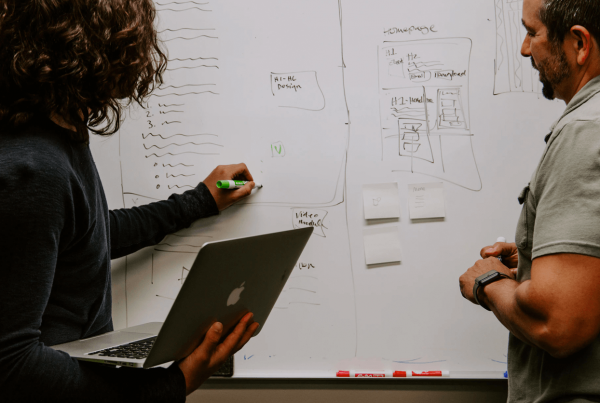Design Thinking has been practiced for centuries. Before it had a name, great innovators of the world – from authors to scientists – used it to create, teach and understand their domain. It’s no surprise then that modern visionaries essentially use the same methodology, producing some of the most groundbreaking technology ever seen. The software industry has been revolutionized by Design Thinking, and with it has come a deeper understanding of the needs of the user – subsequently allowing software firms to create better (and more usable) products. Practices such as Agile Scrum and Lean utilize elements of Design Thinking to develop products faster and with more flexibility.
What is It?
Design Thinking is a methodology that aims to unveil solutions that may not be obvious at first glance. By challenging our initial assumptions, we can better understand the needs of the user. It makes designers ask questions that would otherwise be ignored and encourages open reflection. There are numerous variations of the Design Thinking process but there are five critical phases which are commonly utilized; they include, identifying with your users, defining their needs, challenging ideas, creating solutions and prototypes, and testing the results.

Image courtesy of NN Group
Why Has It Changed the Software Industry?
The process by which software has been traditionally defined, designed, and developed is mostly sequential. There are methodologies that instill flexibility into the software development process, but all are based on actually developing code, not on how ideas and needs are defined and communicated across diverse user and stakeholder groups. With Design Thinking, the industry is adopting the practice of storytelling. By creating a story around a product, developers must view things from a user’s perspective and can determine actual solutions that will be essential in everyday life based off emotions, needs, and goals. Utilizing this method makes team meetings more efficient and effective. Instead of sitting around a table and simply listing out the requirements for a project, Design Thinking encourages brainstorming and participation from every person in the room. This broadens the perspective for everyone involved. While the five phases listed above must be applied, they don’t always flow in order, especially for software development. The prototype or testing phase may bring designers back to the definition or idea stage. That is entirely acceptable, and expected, in an intricate industry such as software.
What Can We Expect in the Future?
As anyone in the software industry will attest, it is easy to be so immersed in a project that you forget what your end-user is trying to accomplish, or you make broad assumptions about what you think users want. As Design Thinking has proven to lessen that drawback, it will only continue to be viewed as an asset in the software industry. Customers expect that the product you deliver is going to make their lives better, and the only way to do that is to have a perspective on their expectations. But, expectations and needs evolve, and with it so will Design Thinking and innovation. The result will be stronger client relationships, faster development time, and overall better products.
Design Thinking is more than deliberating ‘outside of the box’ thinking because it makes us dig deeper and reflect on how users actually perceive the value chain. While designers always need to be creative, resourceful, and inventive with their work, Design Thinking makes us ask important questions. It points us in the right direction concerning what we can do to advance our products. It is ok to examine a challenge or redefine a strategy, as long as the solution you arrive at improves the experience.




